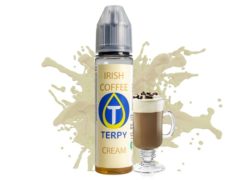Published on: 13/09/2024
Among the Many Components of an Electronic Cigarette, the Heating Element Plays a Key Role
Coils have a fundamental function: they are responsible for vapour production, which is the key element of the vaping experience. However, choosing the right resistor can seem complex for the inexperienced due to the wide range of options available on the market.
In this guide, we will explore in detail the different types of e cigarette resistors, analysing materials, configurations and specific applications to help you make an informed choice.
What Is a Resistor and How Does It Work
Before delving into the various types of resistors, it is important to understand what a resistor is and how it works inside an electronic cigarette.
The resistor is an electrical component that heats the e-cig liquid, turning it into vapour. This process occurs due to the electric current flowing through the resistive wire inside the coil, generating heat. The amount of vapour and the flavour obtained are closely related to the resistance, which can vary in material, wire thickness, number of coils, and other factors.
Resistors can be classified according to several criteria, including the material of the resistive wire, the configuration of the coils, and the ohmic value. These factors determine not only the vapour production, but also the durability of the coil and the overall vaping experience.
Read also: How to choose the right liquid for your e cigarette
Coil Materials: An Overview
The material of the resistive wire is one of the most important aspects when choosing a resistor. Each material has unique characteristics that influence the responsiveness of the coil, vapour production and flavour quality.
Below, we analyse the main materials used:
- Kanthal (FeCrAl): kanthal is one of the most commonly used materials for resistors. It is an alloy of iron, chromium and aluminium, prized for its durability and ability to maintain stable resistance even at high temperatures. Kanthal is particularly suitable for use in variable power mode, as its resistance does not change significantly with temperature.
- Nichrome (NiCr): another widely used alloy is Nichrome, which consists of nickel and chromium. Compared to Kanthal, Nichrome has a lower resistance, which means it heats up more quickly. This characteristic makes it ideal for those seeking a faster response from their electronic cigarette. However, Nichrome is less resistant than Kanthal and can degrade more quickly at very high temperatures.
- Stainless Steel (SS): stainless steel is a versatile material that can be used in both variable wattage and temperature control modes. This makes it a popular choice among experienced vapers. Stainless steel has a resistance that varies with temperature, which allows it to be used in TC (temperature control) mode, offering a safer and more controlled vaping experience.
- Pure Nickel (Ni200): pure nickel is used exclusively for temperature control modes. It has a very low resistance, which makes it unsuitable for use in variable wattage mode. However, in TC mode, Nickel is extremely precise and responsive, ensuring accurate temperature control while vaping.
- Titanium (Ti): titanium is another material mainly used for temperature control. Like nickel, it has a relatively low resistance and changes resistance considerably with temperature. However, titanium must be used with caution as it can release potentially harmful oxides if overheated.


Coils: How Important Are They?
Coils have a significant influence on the vaping experience. They can have different characteristics, resulting in different amounts of vapour produced and a variation in flavour. Here are the different types of coils:
- Single Coil: as the name suggests, a single coil consists of a single loop of resistive wire. This configuration is simple and straightforward, providing a vaping experience with moderate battery and liquid consumption. Single coils are ideal for those seeking a balanced vaping experience with decent vapour production and good flavour.
- Dual Coil: a dual coil consists of two coils of resistive wire, usually placed in parallel. This configuration increases the heated surface area, producing more vapour. However, dual coils consume more battery and liquid than single coils, which may not be ideal for all vapers.
- Triple Coil and Beyond: configurations with three or more coils (triple, quad, etc.) are mainly used in sub-ohm devices designed to produce huge clouds of vapour. These configurations require powerful batteries and more intensive use of liquid, but offer a highly intense vaping experience.
- Clapton Coil: a Clapton coil is a special configuration in which a thinner wire is wrapped around a thicker central wire. This design increases the surface area of the wire, which improves vapour production and aromatic performance. Clapton coils are highly valued by experienced vapers for the rich flavour they can provide.
- Mesh Coil: mesh coils consist of a thin metal mesh rather than a wound wire. This configuration offers a much larger surface area than traditional coils, allowing for even heating and superior vapour production. Mesh coils are known for offering very pure flavour and durability, making them an excellent choice for those seeking consistent performance.
Differences Between Sub-Ohm and Standard Resistors
A fundamental distinction in the world of e-cig resistors is that between sub-ohm and standard resistors. This difference not only concerns ohmic values, but also affects the entire vaping experience.
- Standard resistors: these resistors have an ohm value above 1 ohm and are mainly used for so-called ‘mouth-to-lung’ (MTL) vaping. This type of vaping simulates the inhalation of a traditional cigarette, offering a more familiar sensation to those switching from smoking to vaping. Standard resistors produce less vapour, but tend to consume less battery and liquid, making them ideal for prolonged daily use.
- Sub-Ohm Resistors: Sub-Ohm resistors, with values below 1 ohm, are designed for ‘direct-to-lung’ (DTL) vaping. This vaping mode produces large amounts of vapour and requires devices with powerful batteries and high wattage capabilities. Sub-ohm resistances are perfect for those who seek an intense vaping experience and want to produce voluminous clouds of vapour.
Sub-ohm resistances, although popular among vaping enthusiasts, require a more expert approach. It is important to consider factors such as liquid and battery consumption, and the need to handle higher temperatures. In addition, sub-ohm vaping tends to offer a more intense flavour, but may not be suitable for everyone, especially those accustomed to standard resistances.
How to Choose the Right Resistance for Your Electronic Cigarette
Choosing the right resistance for your electronic cigarette depends on a number of personal factors, including your vaping preferences, the device you use and the type of liquid you prefer. Here are some key criteria to consider:


- Type of vaping: If you prefer MTL (mouth-to-lung) vaping simulating a traditional cigarette, opt for resistors with higher ohmic values. If you prefer DTL (direct-to-lung) with voluminous vapour clouds, sub-ohm resistors are the best choice.
- Liquid used: The composition of the e-cig liquid can influence the durability of the resistance and the quality of the vape. Liquids with a high VG (vegetable glycerine) content tend to produce more vapour but can wear out the resistance more quickly. If you use liquids with a high VG content, you may prefer resistors with more robust configurations such as mesh coils.
- Durability of resistance: Some materials and configurations offer greater longevity than others. For example, mesh coils are known to last longer than traditional coils. Consider how often you are willing to replace the resistance and choose accordingly.
- Device compatibility: not all resistors are compatible with all devices. Make sure you choose resistors that are compatible with your atomiser or pod system, taking into account the manufacturer’s specifications.
Maintenance and Care of Resistors
Proper maintenance can significantly extend the life of your resistance and improve your vaping experience.
Here are some useful tips:
- ‘Prime’ the resistor: before using a new resistor, make sure to ‘prime’ it properly, i.e. wet the cotton with a few drops of e-liquid before mounting it in your device. This prevents the cotton from burning on first use.
- Adjust the wattage: using the correct wattage for your resistance is crucial. Too high a wattage can overheat and damage the resistance, while too low a wattage may not provide enough heat for an optimal vaping experience.
- Clean regularly: if possible, clean the heating element and atomiser regularly. This can help remove any liquid deposits and maintain a pure flavour for longer.
Read also: The most common vaping mistakes (and how to avoid them)
Conclusion
Electronic cigarette resistors are crucial components that greatly influence the vaping experience. From the choice of material to the coil configuration, every detail counts to achieve the best balance between flavour, vapour and battery life. With a deeper understanding of the various types of resistors, you will be able to choose the best solution for your vaping needs.
Remember that experimentation is an integral part of the process: don’t hesitate to try different configurations and materials until you find the one that gives you the best experience.
Visit Terpy and buy the best resistance for you now!





